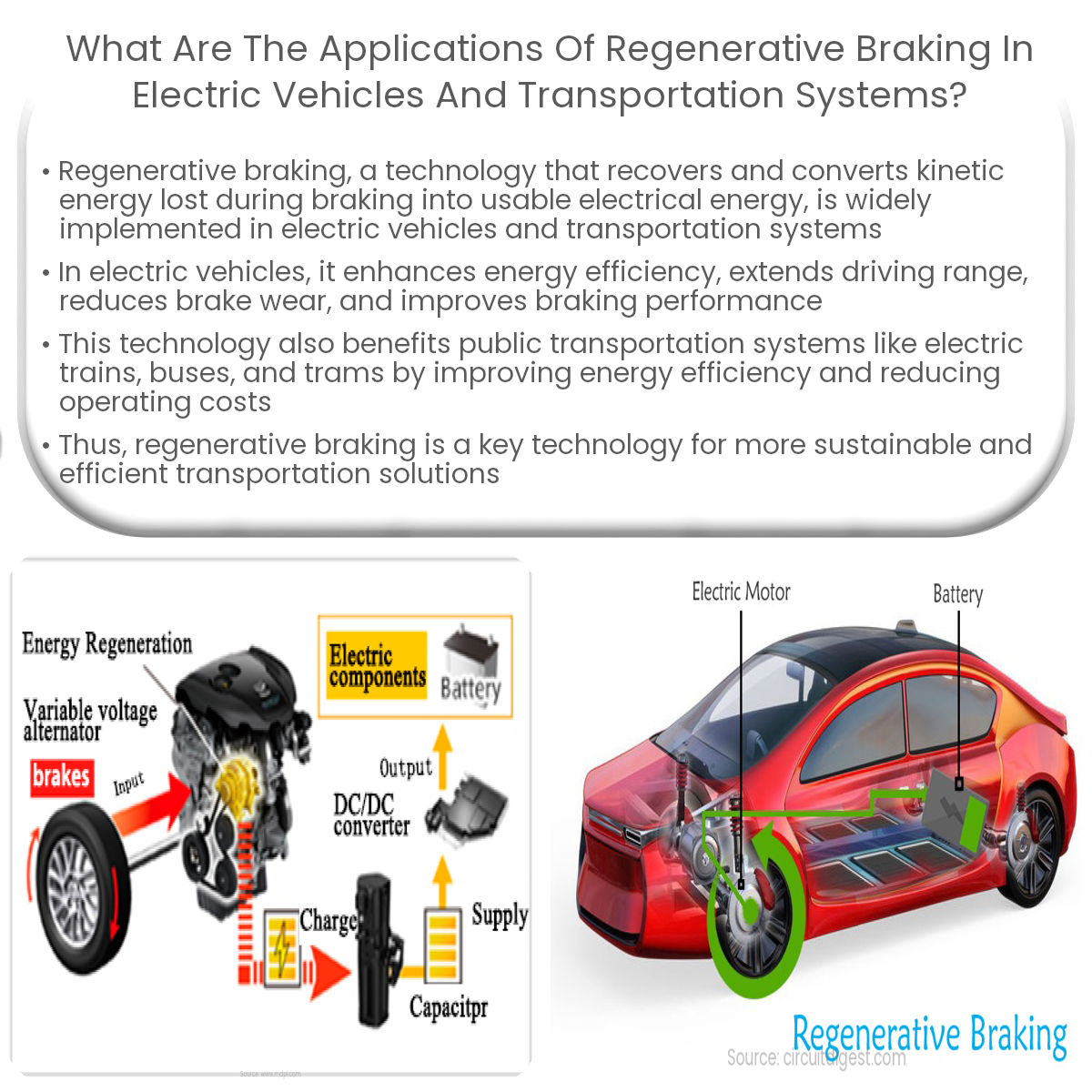Regenerative braking is used in electric vehicles and public transportation systems, improving energy efficiency, reducing brake wear, and lowering costs.
Applications of Regenerative Braking in Electric Vehicles and Transportation Systems
Regenerative braking is a technology that recovers kinetic energy typically lost as heat during braking and converts it into usable electrical energy. This innovative technology is widely used in electric vehicles (EVs) and transportation systems, providing numerous benefits. This article discusses the various applications of regenerative braking in these fields.
Electric Vehicles
Regenerative braking is commonly used in electric vehicles, including battery electric vehicles (BEVs), hybrid electric vehicles (HEVs), and plug-in hybrid electric vehicles (PHEVs). The benefits of using regenerative braking in EVs are:
Public Transportation Systems
Regenerative braking is also used in various public transportation systems to improve energy efficiency and reduce operating costs. Some examples include:
Conclusion
Regenerative braking has found widespread application in electric vehicles and transportation systems, offering improved energy efficiency, extended driving range, reduced brake wear, and enhanced braking performance. By recovering and reusing kinetic energy otherwise lost during braking, regenerative braking is a vital technology in the quest for more sustainable and efficient transportation solutions.


